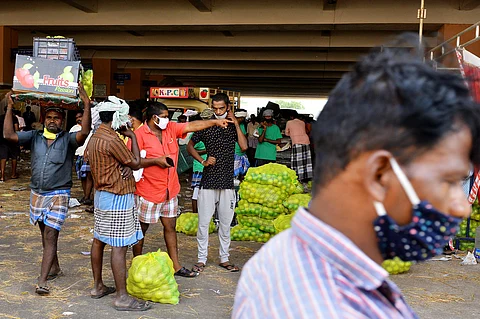

Future public health historians would be puzzled by the amount of backtracking that occurred on the slushy road of scientific recommendations related to COVID-19. That is because disparate information on the novel virus emerged in different stages of the epidemic, requiring several course corrections. This uncertain terrain will continue till surer science leads us to a straight road with less twists and turns.
The latest twist is related to whether or not asymptomatic persons infected with the virus pose a risk of transmission to others. At an unguarded moment in a press conference, a WHO spokesperson told the world that asymptomatic persons posed no risk. An avalanche of criticism poured down on the WHO from international experts and media, questioning the evidence behind that assertion and implications for public health messaging on social distancing and masks.
The WHO hastened to clarify that while limited evidence was available, it was insufficient and that all precautions still needed to be observed.What does science say, at our present level of knowledge?
Among all infected persons, there will be three categories at any given time: symptomatic persons, pre-symptomatic persons who have not yet developed symptoms but will soon do so, and a truly ‘asymptomatic’ group that will course through the illness without experiencing typical symptoms.
ALSO READ | Big breakthrough in COVID fight: Trial finds life-saving drug that cuts death rates by a third
Usually, infection spreads when a person with symptoms coughs or sneezes, discharging several millions of viruses that spread through droplets. Normal speech can discharge a few hundred viruses, which fall short of the viral assault needed to infect, but loud speech, shouting or singing can discharge thousands of viral particles that can infect. Also, a pre-symptomatic person may suddenly transition to a symptomatic stage without forewarning, and cough or sneeze to infect those around.
While it is logical to assume that a truly asymptomatic person poses little risk, these modifying factors make any infected person unpredictably capable of dissemination. The WHO spokesperson was accurate in a limited theoretical frame, but slipped by not taking into account real world variations. Meghalaya has just announced that every person will be treated as an asymptomatic carrier “by default”, to prevent community transmission. Much like security checks at airports where every person is regarded as a potential terrorist for screening, even if most travellers do not fit the profile. In an active pandemic, that practical approach outweighs a theoretical construct of who discharges how many virus particles through which act at what point in the natural history of the infection.
It is for this reason that physical distancing, masks and hand hygiene remain the troika of personal protection measures during an active epidemic. Masks were initially discouraged for common use. It was stated that only symptomatically infected persons and healthcare personnel should use them. Others were discouraged from using them, on the grounds that there was no evidence of benefit through universal use. Nevertheless, South East Asian and East Asian countries drew on their experience of past respiratory virus epidemics and decided to adopt the practice of face masks for all.
The speed and success with which these countries countered the epidemic made the world take notice and the WHO changed the advisory to recommend universal use of masks. Experiential wisdom in Asia clearly cannot be discounted as evidence, even if Western countries lacked trial data. Another lesson learnt!
Our understanding of COVID-19’s effect on exposed children has also undergone a review. For quite some time, it was confidently stated that children may get infected but do not become ill. This changed recently with the reporting of an immunologically mediated multi-system inflammation in a small fraction of the infected children. Reported in the UK, US and Europe, this condition has acquired the cumbersome name of Paediatric Inflammatory Multi-system Syndrome Temporally associated with SARS-CoV2 (PIMS-TS). This resembles a condition called Kawasaki Syndrome. Here the emergence of new knowledge on children was unavailable till Europe and North America became the epicentres of infection after China. A lesson not to take anything for granted with this virus.
Another recent change involved the recommendation that symptomatic COVID-19 infected persons who are isolated can be discharged without a repeat RT-PCR test, after their symptoms subside. Previously, a virus-negative status was deemed essential for discharge. However, evidence from South Korea and China showed that several individuals who had clinically recovered continue to test positive. Detailed assessment revealed that ‘dead virus particles’ could continue to give a positive test result, despite clinical recovery and immunological evidence of antibody response. This phenomenon led to a Montreal woman being separated from her newborn baby for 55 days because she continued to test positive! Clearly, the recommendations had to be revised.
ALSO WATCH:
Science is not infallible, but it has the power of self-correction. In a new epidemic, there are many knowledge gaps early on. As fresh information is accumulated and analysed, scientific recommendations do undergo change. What is needed is a critical but open mind to appraise new data and course- correct policy on the basis of convincing evidence. COVID-19 is teaching us that lesson every day.
DR K Srinath Reddy
President, Public Health Foundation of India (PHFI)
(The author is an adjunct professor of epidemiology at the Harvard T H Chan School of Public Health. ksrinath.reddy@phfi.org)